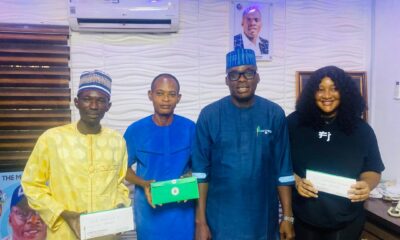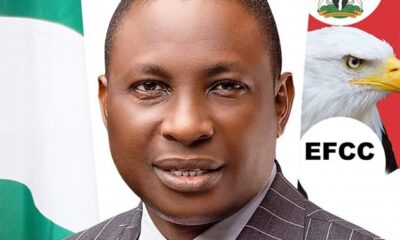National Issues
US: 9 Things You May Not Know About the Declaration of Independence | By ELIZABETH HARRISON
As people across the United States celebrate the nation’s birthday, explore nine surprising facts about the founding document adopted on July 4, 1776.
1. The Declaration of Independence wasn’t signed on July 4, 1776.
On July 1, 1776, the Second Continental Congress met in Philadelphia, and on the following day 12 of the 13 colonies voted in favor of Richard Henry Lee’s motion for independence. The delegates then spent the next two days debating and revising the language of a statement drafted by Thomas Jefferson. On July 4, Congress officially adopted the Declaration of Independence, and as a result the date is celebrated as Independence Day. Nearly a month would go by, however, before the actual signing of the document took place. First, New York’s delegates didn’t officially give their support until July 9 because their home assembly hadn’t yet authorized them to vote in favor of independence. Next, it took two weeks for the Declaration to be “engrossed”—written on parchment in a clear hand. Most of the delegates signed on August 2, but several—Elbridge Gerry, Oliver Wolcott, Lewis Morris, Thomas McKean and Matthew Thornton—signed on a later date. (Two others, John Dickinson and Robert R. Livingston, never signed at all.) The signed parchment copy now resides at the National Archives in the Rotunda for the Charters of Freedom, alongside the Constitution and the Bill of Rights.
2. More than one copy exists.
After the adoption of the Declaration of Independence, the “Committee of Five”—Thomas Jefferson, John Adams, Benjamin Franklin, Roger Sherman and Robert R. Livingston—was charged with overseeing the reproduction of the approved text. This was completed at the shop of Philadelphia printer John Dunlap. On July 5, Dunlap’s copies were dispatched across the 13 colonies to newspapers, local officials and the commanders of the Continental troops. These rare documents, known as “Dunlap broadsides,” predate the engrossed version signed by the delegates. Of the hundreds thought to have been printed on the night of July 4, only 26 copies survive. Most are held in museum and library collections, but three are privately owned.
3. When news of the Declaration of Independence reached New York City, it started a riot.
By July 9, 1776, a copy of the Declaration of Independence had reached New York City. With hundreds of British naval ships occupying New York Harbor, revolutionary spirit and military tensions were running high. George Washington, commander of the Continental forces in New York, read the document aloud in front of City Hall. A raucous crowd cheered the inspiring words, and later that day tore down a nearby statue of George III. The statue was subsequently melted down and shaped into more than 42,000 musket balls for the fledgling American army.
4. Eight of the 56 signers of the Declaration of Independence were born in Britain.
While the majority of the members of the Second Continental Congress were native-born Americans, eight of the men voting for independence from Britain were born there. Button Gwinnett and Robert Morris were born in England, Francis Lewis was born in Wales, James Wilson and John Witherspoon were born in Scotland, George Taylor and Matthew Thornton were born in Ireland and James Smith hailed from Northern Ireland.
5. One signer later recanted.
Richard Stockton, a lawyer from Princeton, New Jersey, became the only signer of the Declaration of Independence to recant his support of the revolution. On November 30, 1776, the hapless delegate was captured by the British and thrown in jail. After months of harsh treatment and meager rations, Stockton repudiated his signature on the Declaration of Independence and swore his allegiance to King George III. A broken man when he regained his freedom, he took a new oath of loyalty to the state of New Jersey in December 1777.
6. There was a 44-year age difference between the youngest and oldest signers.
The oldest signer was Benjamin Franklin, 70 years old when he scrawled his name on the parchment. The youngest was Edward Rutledge, a lawyer from South Carolina who was only 26 at the time. Rutledge narrowly beat out fellow South Carolinian Thomas Lynch Jr., just four months his senior, for the title.
7. Two additional copies have been found in the last 25 years.
In 1989, a Philadelphia man found an original Dunlap Broadside hidden in the back of a picture frame he bought at a flea market for $4. One of the few surviving copies from the official first printing of the Declaration, it was in excellent condition and sold for $8.1 million in 2000. A 26th known Dunlap broadside emerged at the British National Archives in 2009, hidden for centuries in a box of papers captured from American colonists during the Revolutionary War. One of three Dunlap broadsides at the National Archives, the copy remains there to this day.
8. The Declaration of Independence spent World War II in Fort Knox.
On December 23, 1941, just over two weeks after the Japanese attack on Pearl Harbor, the signed Declaration, together with the Constitution, was removed from public display and prepared for evacuation out of Washington, D.C. Under the supervision of armed guards, the founding document was packed in a specially designed container, latched with padlocks, sealed with lead and placed in a larger box. All told, 150 pounds of protective gear surrounded the parchment. On December 26 and 27, accompanied by Secret Service agents, it traveled by train to Louisville, Kentucky, where a cavalry troop of the 13th Armored Division escorted it to Fort Knox. The Declaration was returned to Washington, D.C., in 1944.
9. There is something written on the back of the Declaration of Independence.
In the movie “National Treasure,” Nicholas Cage’s character claims that the back of the Declaration contains a treasure map with encrypted instructions from the founding fathers, written in invisible ink. Unfortunately, this is not the case. There is, however, a simpler message, written upside-down across the bottom of the signed document: “Original Declaration of Independence dated 4th July 1776.” No one knows who exactly wrote this or when, but during the Revolutionary War years the parchment was frequently rolled up for transport. It’s thought that the text was added as a label.
National Issues
Nigeria’s Foreign Debt Servicing Hits $3.58bn in Nine Months, Pressuring Budgets
The Nigerian government spent a staggering $3.58 billion on servicing foreign debt within the first nine months of 2024, marking a significant 39.77% increase compared to the $2.56 billion expended over the same period in 2023.
This data, drawn from a recent report on international payment statistics by the Central Bank of Nigeria (CBN), reflects a concerning rise in the country’s foreign debt obligations amid depreciating currency values.
According to the report, the most substantial monthly debt servicing payment occurred in May 2024, totaling $854.37 million. This is a substantial 286.52% increase from May 2023’s $221.05 million.
Meanwhile, the highest monthly payment for 2023 was $641.7 million in July, underscoring the trend of Nigeria’s escalating debt costs.
Detailed analysis of monthly payments further illuminates the trend.
In January 2024, debt servicing costs surged by 398.89%, reaching $560.52 million, a significant rise from $112.35 million in January 2023. However, February saw a modest reduction of 1.84%, with costs decreasing from $288.54 million in 2023 to $283.22 million in 2024. March also recorded a decline of 31.04%, down to $276.17 million from $400.47 million the previous year.
Additional fluctuations in debt payments continued throughout the year, with June witnessing a slight decrease of 6.51% to $50.82 million from $54.36 million in 2023. July 2024 payments dropped by 15.48%, while August showed a 9.69% decline compared to 2023. September, however, reversed the trend with a 17.49% increase, highlighting persistent pressure on foreign debt obligations.
With the rise in exchange rates exacerbating these financial strains, Nigeria’s foreign debt servicing costs are projected to remain elevated.
The central bank’s data highlights how these obligations are stretching national resources as the naira’s devaluation continues to impact debt repayment in dollar terms.
Rising State Debt Levels Add Pressure
The federal government’s debt challenges are mirrored by state governments, whose collective debt rose to N11.47 trillion by June 30, 2024.
Despite allocations from the Federal Accounts Allocation Committee (FAAC) and internally generated revenue (IGR), states remain heavily reliant on federal transfers to meet budgetary demands.
According to the Debt Management Office (DMO), the debt burden for Nigeria’s 36 states and the Federal Capital Territory (FCT) rose by 14.57% from N10.01 trillion in December 2023.
In naira terms, debt rose by 73.46%, from N4.15 trillion to N7.2 trillion, primarily due to the naira’s depreciation from N899.39 to N1,470.19 per dollar within six months. External debt for states and the FCT also increased from $4.61 billion to $4.89 billion during this period.
Further data from BudgIT’s 2024 State of States report illustrates how reliant states are on federal support. The report revealed that 32 states depended on FAAC allocations for at least 55% of their revenue in 2023.
In fact, 14 states relied on FAAC for 70% or more of their revenue. This heavy dependence on federal transfers underscores the vulnerability of states to fluctuations in federal revenue, particularly those tied to oil prices.
The economic challenges facing both the federal and state governments are stark. The combination of mounting foreign debt, fluctuating exchange rates, and high reliance on federally distributed revenue suggests a need for fiscal reforms to bolster revenue generation and reduce vulnerability to external shocks.
With foreign debt obligations continuing to grow, the report emphasizes the urgency for Nigeria to address its debt sustainability to foster long-term economic stability.
National Issues
Rep. Oseni Urges Urgent Action on Rising Building Collapses in Nigeria
Engr. Aderemi Oseni, representing Ibarapa East/Ido Federal Constituency of Oyo State in the House of Representatives, has called for a prompt investigation into the increasing occurrences of building collapses in major cities across Nigeria.
In a motion presented to the House on Wednesday, Oseni expressed deep concern over the alarming frequency of building collapses, emphasising the threat they pose to the lives and property of Nigerians.
The APC lawmaker, through a statement by his media aide, Idowu Ayodele, cited the recent collapse of a two-storey school building at Saint Academy in Busa Buji, Jos, Plateau State, on July 12, 2024. The tragic incident, which trapped 154 people and claimed 22 lives, is the latest in a series of similar disasters, raising serious concerns nationwide.
Oseni also referenced a report from The Punch newspaper, which revealed that Nigeria had recorded 135 building collapse incidents between 2022 and July 2024.
“This figure is alarming and unacceptable,” he stated, stressing the urgency of preventing further occurrences.
The Chairman of the House Committee on Federal Roads Maintenance Agency (FERMA), Oseni reminded the House that the Council for the Regulation of Engineering in Nigeria (COREN) and other relevant professional bodies are responsible for ensuring compliance with building standards and practices.
“Despite these regulatory frameworks, the recurring collapses suggest that enforcement is lacking. The loss of lives, properties, and resources is staggering, and this disturbing trend must be addressed immediately,” he remarked.
He proposed the formation of an Adhoc Committee to investigate the underlying causes of these collapses and recommend both immediate and long-term solutions.
Also, he urged the House Committee on Legislative Compliance to ensure swift implementation of any recommendations.
The House agreed to deliberate on the motion and is expected to present its findings and proposed actions within eight weeks.
National Issues
Corruption Among Political, Religious Leaders Stalls Nation-Building – Olugbon
The Vice-chairman of the Oyo Council of Obas and Chiefs, Oba Francis Olusola Alao, has expressed deep concern over the increasing involvement of religious leaders in material pursuits, accusing them of abandoning their spiritual duties in favour of wealth and influence.
Oba Alao, who is also the Olugbon of Orile Igbon, made this statement during a visit from the leadership of the Cherubim and Seraphim Church Movement “Ayo Ni O,” led by Baba Aladura Prophet Emmanuel Abiodun Alogbo, at his palace in Surulere Local Government on Thursday.
The monarch accused some religious leaders of sharing part of the blame for the moral and political crises that have engulfed the nation. According to him, spiritual leaders, once seen as the moral compass of society, have become compromised by corruption, aligning themselves with the very forces they should condemn.
Oba Alao was unapologetic in his criticism, stating, “Ninety-five percent of Nigerian leaders, both political and religious, are spiritually compromised.”
He argued that this moral decay among clerics has made it impossible for them to hold political leaders accountable or speak the truth to those in power, as their integrity has been eroded by their pursuit of material wealth.
“Carnality has taken over spirituality. Our religious leaders can no longer speak the truth to those in authority because their minds have been corrupted. Most of the so-called General Overseers (G.O.) are corrupt and perverted,” Oba Alao added.
He stressed that this shift towards wealth accumulation at the expense of spiritual values has greatly contributed to the country’s stagnation in development and social justice.
Olugbon urged both religious leaders and traditional rulers to reflect on their actions, reminding them that they would be held accountable for their stewardship, both in this world and the next.
“The prayers of sinners are an abomination before God, hence the need for our leaders to rethink,” he warned.
The monarch concluded by reiterating the transient nature of power and the importance of staying true to sacred duties, regardless of the temptation to indulge in worldly gains. “I am a traditional ruler. I don’t belong, and will never belong, to any occultic groups,” he emphasised, drawing a clear line between his position and the corrupt practices of some leaders.
In response to the Cherubim and Seraphim Church Movement’s request for collaboration on community development projects, Oba Alao assured them of his support.
“Your requests are aimed at the development of the Orile Igbon community. I am assuring you that necessary assistance will be provided in this regard.”
Earlier, Prophet Alogbo requested the monarch’s collaboration on a range of community development projects. These initiatives include the establishment of a women and youth empowerment center, clean drinking water initiatives, a bakery, animal production facilities, and farm produce processing.
Other proposals included a diagnostic and medical center, a full-size recreational sports facility, and a home care facility for the elderly.
-



 Politics6 days ago
Politics6 days agoOyo Rep. Member, Akinmoyede Appoints Three More Aides
-



 Crime & Court1 week ago
Crime & Court1 week agoEFCC Chair Raises Alarm on Rampant Fraud in Nigeria’s Electricity Sector
-



 Health7 days ago
Health7 days agoOyo: Tragedy As Bride-to-Be Among Four Dead in Suspected Lassa Fever Outbreak
-



 Politics5 days ago
Politics5 days ago#OndoDecides2024: Rep Oseni Hails Aiyedatiwa’s Victory, Commends Residents for Peaceful Polls